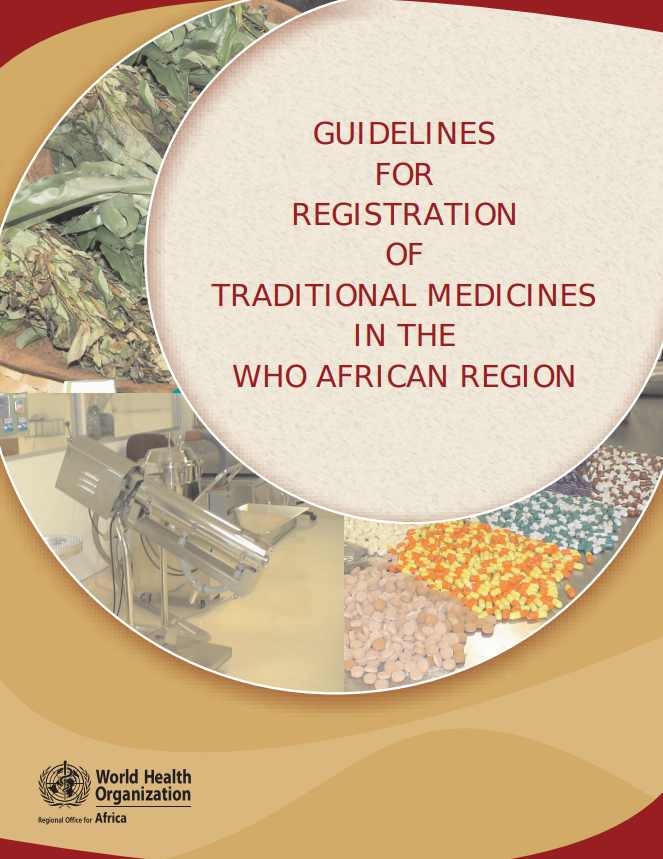
Guidelines for Registration of Traditional Medicines in the African Region
The purpose of this document is to propose to Member States a framework for facilitating the registration of traditional medicines. The proposed framework, which has a regional perspective, is intended to accelerate the registration and circulation of standardized African traditional medicines within the WHO African Region, on the basis of criteria of pharmaceutical quality, safety of use and therapeutic efficacy.
The guidelines are aimed at national drug regulatory authorities, manufacturers, traditional health practitioners and institutions engaged in drug research and development, who should ensure that their products satisfy the requirements laid down in this document. The guidelines can also be used for training and teaching purposes, in particular, for teaching undergraduate and postgraduate pharmacy, and for training pharmacy technicians, nurses and medical students, related health professions and agencies involved in the development of traditional medicine in the WHO African Region.
Many countries in the WHO African Region are encountering problems in providing their people with equitable access to health care; at present, only about one half of the population in the Region has access to conventional health care. Such considerations aside, traditional medicines continue to be popular for both historical and cultural reasons.
It has been estimated that around 80% of the population living in the WHO African Region rely on traditional forms of medicine to meet their health care needs. In countries for which more detailed data are available, the percentage of the population that uses traditional medicine ranges from 90% in Burundi and Ethiopia, to 80% in Burkina Faso, the Democratic Republic of Congo and South Africa; 70% in Benin, Cote d'Ivoire, Ghana, Mali and Rwanda and 60% in Tanzania and Uganda.
The document is divided into three parts:
- Part I outlines the history of the development of the guidelines, the guideline objectives, and a classification system for traditional medicines
- Part II lays down proposals for the minimum regulatory requirements for the registration of each category of traditional medicine, in terms of the quality of plant raw materials as well as quality, safety and efficacy of the finished product and labelling and packaging.
- Part III proposes procedures for the registration of traditional medicines and addresses a range of issues related to the registration of traditional medicines, marketing and advertising; post-market surveillance and the organization of pharmacovigilance; and production authorization and distribution channels.
A list of further reading, which includes a number of information sources that were used to support the preparation of the guidelines, is also provided.


